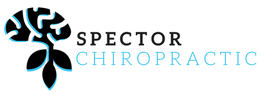Pediatric Conditions That Chiropractic Care Helps
- Infantile Colic: One of the most studied conditions; chiropractic care may reduce crying duration and frequency.
- Breastfeeding Difficulties: Improvements in latch, suckling, and jaw mobility have been reported, especially when TMJ or cervical restrictions are present. [A]
- Torticollis: Chiropractic adjustments may help restore neck range of motion and head positioning.
- Plagiocephaly (Flat Head Syndrome): Often associated with torticollis; improved neck mobility may reduce positional flattening.
- Birth Trauma (e.g., Clavicular Fracture): Gentle manual therapy may support healing and reduce associated discomfort. [A]
- Sleep Disturbances: Improved comfort and reduced musculoskeletal tension may enhance sleep quality.
- Gastrointestinal Discomfort (e.g., Constipation, Reflux): Some reports suggest improved bowel movements and reduced reflux symptoms.
- Ear Infections (Otitis Media): Chiropractic care may support drainage and reduce pressure that is causing discomfort and infection. [B]
- Upper Respiratory Infections: Anecdotal reports suggest symptom relief, possibly through improved lymphatic flow. [B]
- Neurodevelopmental Delay: Case studies describe improved motor milestones and neurological responses following care. [C]
- Enuresis (Bedwetting): Some reports include improvement in bladder control with spinal adjustments. [C]
- Headaches: Documented in older children; chiropractic care may reduce frequency and severity. [C]
- Jaw Asymmetry or TMJ Dysfunction: Can affect feeding and comfort; gentle adjustments may improve symmetry.
- Postural Imbalances: Chiropractic care may help correct early postural asymmetries that affect development.
- General Irritability or Excessive Crying: Often linked to discomfort or subluxations; care may improve overall demeanor and comfort.
Children and Teens, Chiropractic care is drug-free, safe, and gentle.
- Tension Headaches: Linked to neck and upper back tension; chiropractic adjustments may reduce frequency and severity.
- Migraine Headaches: Some evidence suggests spinal manipulation can help alleviate symptoms and reduce triggers.
- Vertigo or Dizziness: Cervical spine adjustments may help with balance and vestibular function.
- Scoliosis: Chiropractic care may help manage mild cases through posture correction and spinal mobilization.
- Postural Syndromes (e.g., Text Neck, Forward Head Posture): Common in teens due to device use; chiropractic care can improve alignment and reduce strain.
- Low Back Pain: Often caused by sports, backpacks, or growth spurts; spinal adjustments and core exercises are beneficial.
- Neck and Shoulder Pain: Manual therapy and ergonomic advice help relieve tension and improve mobility.
- Growing Pains / Joint Discomfort: Chiropractic care may support joint alignment and reduce inflammation during growth spurts.
- Sports Injuries (e.g., sprains, strains): Chiropractors often help with recovery, mobility, and injury prevention.
- Overuse Injuries (e.g., tennis elbow, runner’s knee): Manual therapy and biomechanical corrections can reduce recurrence.
- Breathing issues (e.g., asthma): Some studies suggest chiropractic care may improve thoracic mobility and breathing mechanics, though evidence is mixed [A]
- Sinusitis / Allergies: Cervical and thoracic adjustments may help drainage and reduce pressure.
- Behavioral & Developmental issues (e.g., ADHD (Attention Deficit Hyperactivity Disorder)): Limited but emerging evidence suggests chiropractic care may support nervous system regulation [A]
